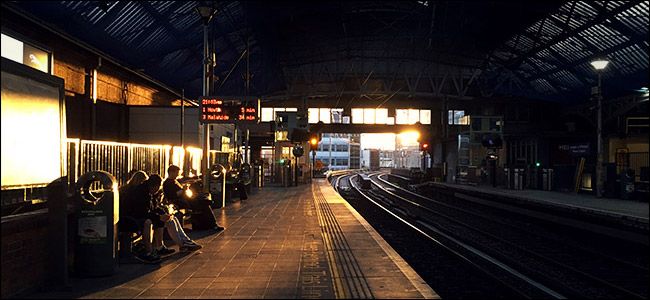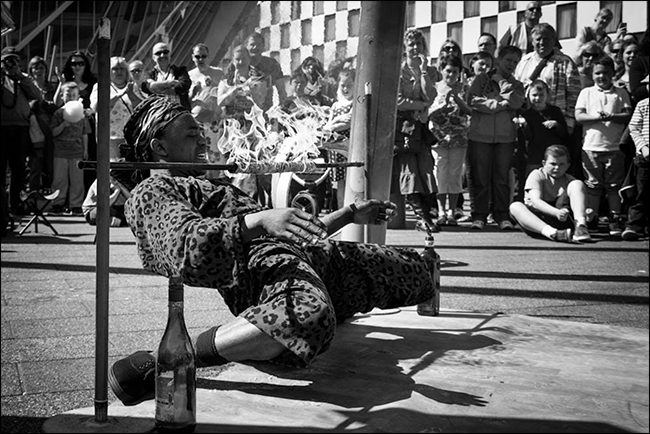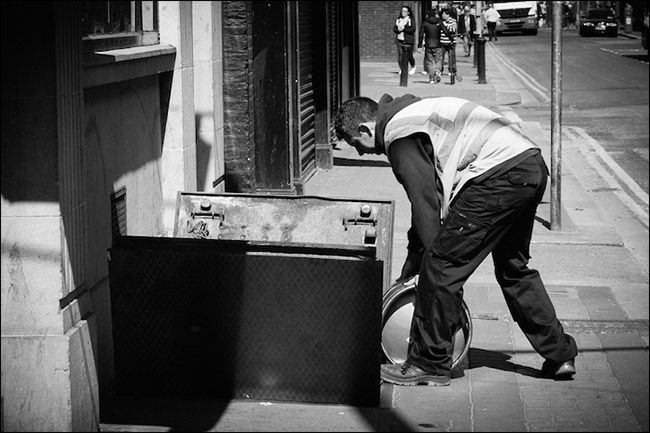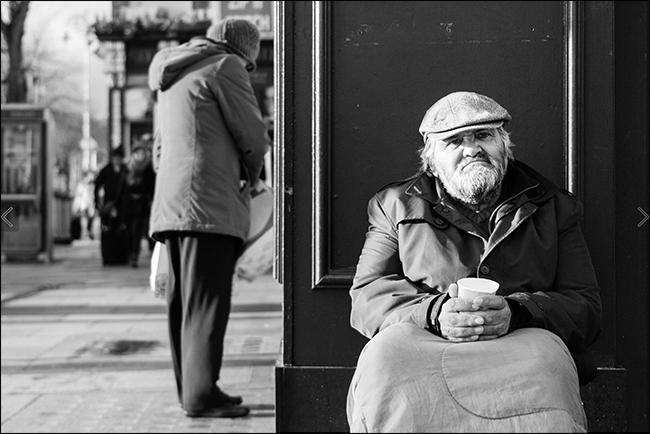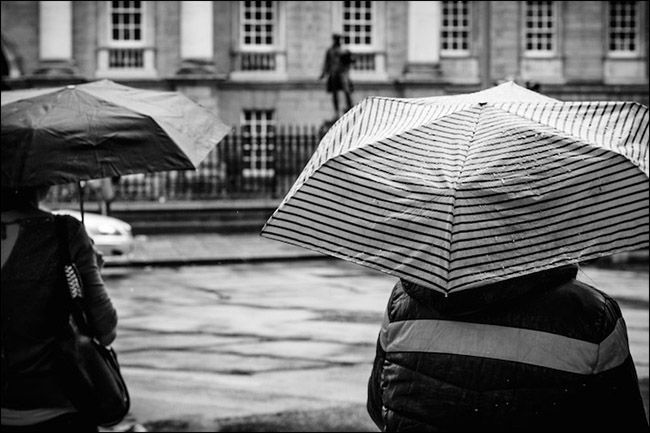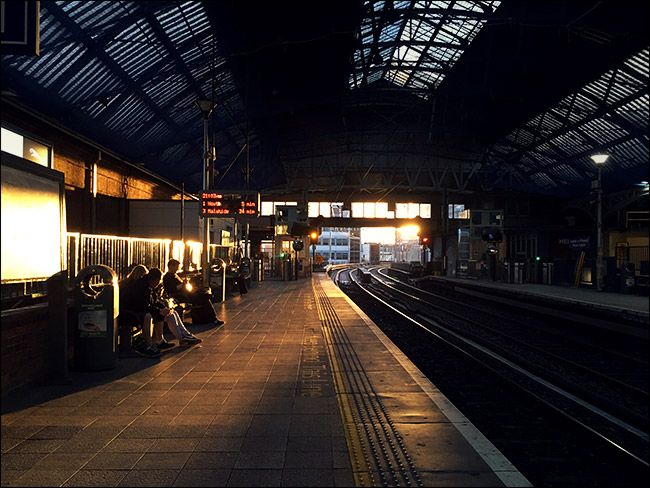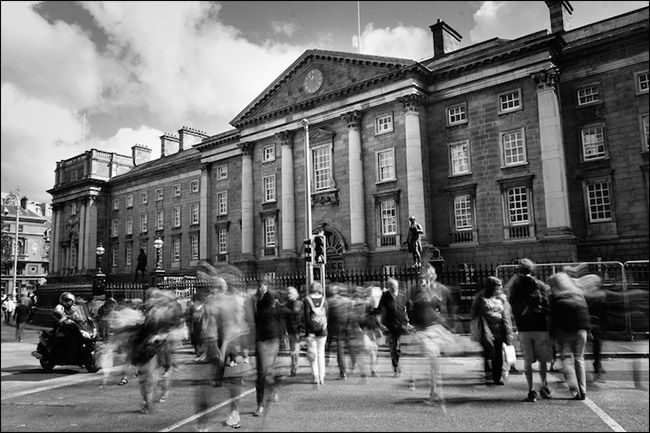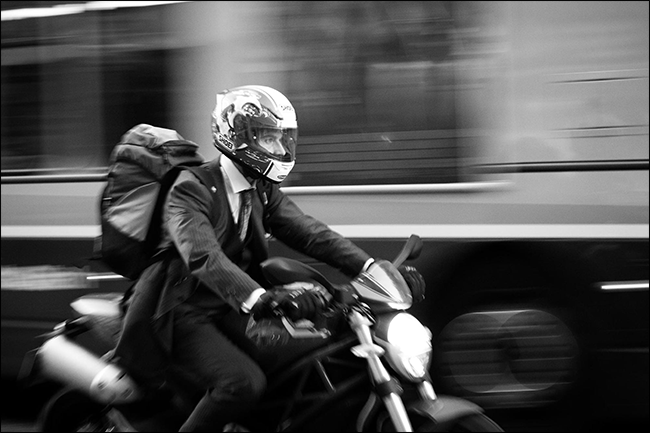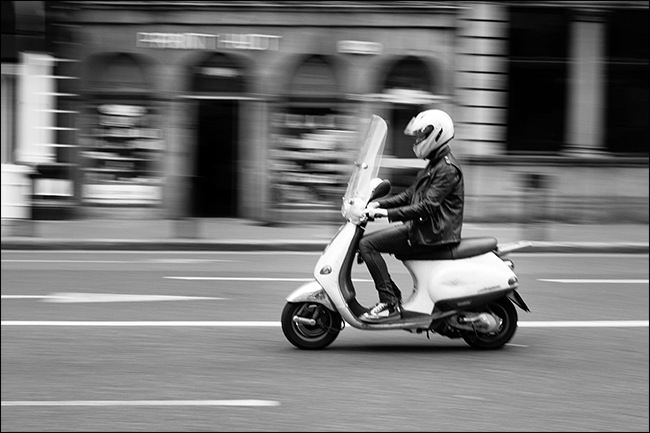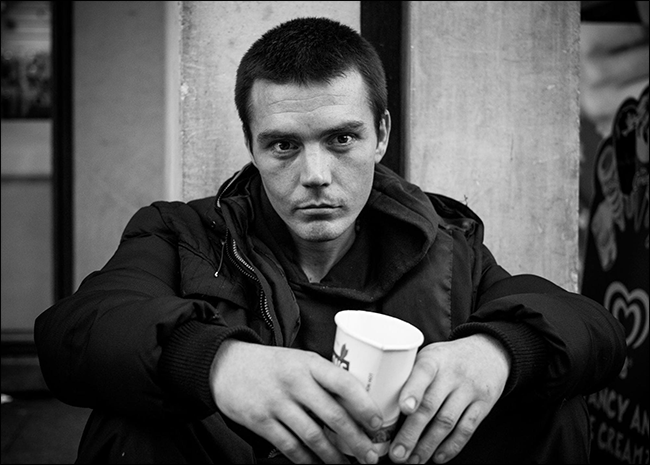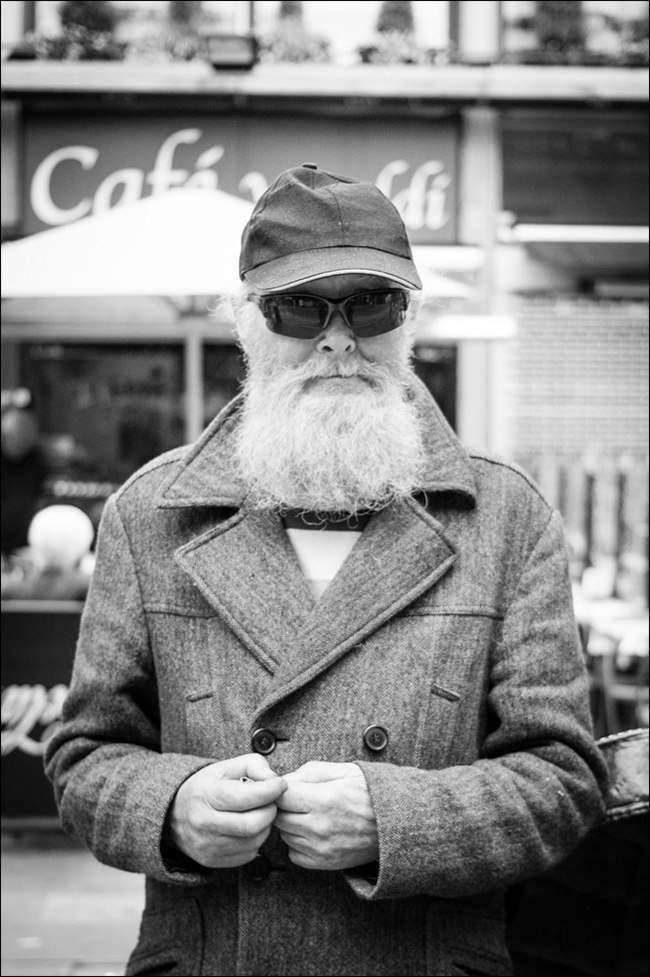Street photography is about documenting the day to day life of a city. It’s about capturing the small, authentic moments that take a city from grey concrete and turn it into a real, living place. It’s a really popular genre of photography, so let’s have a look at how to do it well.
All the photos in this article were shot by me on the streets of my hometown, Dublin, Ireland.
What Makes a Good Street Photo
Good street photography is about a specific city and the people in that city. The best photos tell a story that can’t be told anywhere else. The great street photographers of the 40s, 50s, 60s and 70s spent decades treading the same ground, building a story through their work.
There’s no one thing that makes a perfect street photo. If you capture an image of an authentic moment on the streets of a city, then it’s going to be a good photo. A generic photo that could have been taken in any of a hundred cities might be technically perfect, but it won’t stand out.
Street photography is distinct from architectural or cityscape photography. While all three can happen on the streets, architectural and cityscape work focuses on the buildings. Street photography focuses on the human element.
The Technical Details
Technically, street photography is quite similar to travel photography, and the two often overlap. What is street photography in your home city might well be travel photography if you go somewhere else.
Let’s refresh anyway. Street photos are all about little moments, so you need to be ready to capture whatever happens. That means having your camera set up and ready to go. Whenever you’re wandering the streets it should be turned on, with the lens cap off. That way you can raise it to your eye and start shooting in just a few seconds.
As always, aperture priority mode is your friend. I’ve mentioned before that, according to one of the best street photographers of all time, Arthur “Weegee” Fellig, the secret to great street photography is “f/8 and be there”. As long as your aperture is set to f/8, you should be able to capture a decent photo of anything that happens around you.
For ISO, I like to use 400 during the day. Whether I’m in a shadowy alley or bright sunlight, it keeps the shutter speed high enough to work. Check out our guides on taking photos at night and taking photos at sunset if you’re going to take photos at those times.
Lens selection depends on what subjects you plan to shoot. 35mm on a full frame camera (approximately 22mm on an APS-C camera) was the focal length used by many of the greats like Weegee, but 50mm (just under 35mm on an APS-C camera) also has its adherents. The wider 35mm gives a bigger field of view that can encompass more of a scene while a 50mm lens lets you get closer to individual people or elements. I’ve shot with both and don’t really have a preference. Try them both and see what you like; or break the rules and use whatever lens you want to.
Street photography is really accessible, the kit lens that comes with most cameras handily covers both traditional focal lengths and most smartphone cameras have a lens that’s roughly equivalent to 35mm.
Other Tips and Tricks
With street photography, you’re looking for small, authentic moments. It’s all about the day to day happenings of a city. The best way to take great street photos is to always have a camera with you and just shoot away. Take photos of the things that happen every day, or every time it rains, or every summer. Take photos of the things that make your city unique and the things that your city has in common with every other. Just keep taking photos and the good ones will come.
Street photography is one of the times where you might actually be better off using your smartphone instead of your DSLR. Someone wandering around with a gigantic camera attracts a lot more attention than someone taking a few photos with a phone or other small camera. If you’re going to use your DSLR, try not to be too obvious about it or you’ll disturb the moments you want to capture. Below is a shot I took on my iPhone; it may be the best photo in this article.
The streets are always hustling and bustling. Cars and people are in constant motion. The best way to show this is to deliberately slow your shutter speed down. If you increase your aperture to f/16 or f/20 and lower your ISO to 100 then your shutter speed should fall to somewhere between 1/2 and 1/10 of a second. At this speed, moving objects begin to blur. You’ve a few options for how to use it.
The first is to pick an interesting landmark, mount your camera on a tripod (or rest it on a bin, park bench, or anything else) and take a photo. The people will blur but the landmark won’t. Here’s a shot I did like that outside Trinity College, Dublin.
The second, and more difficult option, is to find a moving vehicle or person and track them with your camera as you take a picture. Here’s one I did of a guy on a motorbike.
If you match the speed you track to the moving person or vehicle, they’ll be sharp in the frame while the background blurs out with the movement. It’s a great way to show a living city.
One big question people often have about street photography is what can you legally do with the photos you take of other people. Do you need their permission to even take a photo? Or to share it on social media? Or use on your website? Or sell? I’m only going to address this in broad terms because different countries have different specific laws, but generally in the Western world, people on the street have “no expectation of privacy”. This means that if they’re out in public, you’re free to take photos of them and any photos you do take are yours due to copyright. Just because someone’s in a photo, it doesn’t mean they’ve any rights to it.
For editorial, artistic and personal use, you’re normally free to use your street photos as you want. I’m perfectly within my rights to use my pictures for this article. The one dodgy area is if you try to use your photos in an advertising campaign (or sell them to someone who does) in such a way that the person in the photo appears to be endorsing a specific position or product. For example, if I sold one of the photos in this article to Pfizer and they used it in a campaign for Viagra in such a way that it implied the person in it suffered from erectile dysfunction, then they could sue.
The best advice I can give is look into your specific local laws and don’t sell any street photos to commercial companies or through stock photo websites without getting model releases. Other than that, you’re probably in the clear.
With that said, if you’re going to be taking photos where one person is very much the subject of the image, it’s just polite to ask their permission. If it’s possible for you to do it before, it’s best, but if drawing attention to your camera will detract from the image you want to capture, you can ask them after. Just show them the image you took and, if they’re not happy, you can delete it.
Actually approaching strangers to ask to take their photo is an area where people often struggle with street photography. The truth is, there’s not much to it. You just have to be brave and go for it with a big friendly smile on your face. The less you look like a serial killer, the better; don’t approach people scowling with a hood up or shout at them from behind to get their attention. Just try and be a regular, normal person who happens to like documenting the streets of the city they live in.
Yes, it might seem a little awkward approaching strangers, but if you do it in a friendly manner, nothing is going to go wrong. I can count the times on one hand when I’ve been told no. It’s really that simple. For example, in the photo above, I saw this guy with a really cool beard so I said something to the effect of, “hey, I love your beard. Do you mind if I take a quick photo?” He said yes, and here it is in this article.
The more you overthink your approach, the harder it gets. Brandon Stanton, the creator of Humans of New York, made a career for himself just by approaching strangers, asking to take their photo and finding out a bit about them. Be friendly, don’t stare at them for too long like you’re a serial killer looking for your next victim and don’t take it personally if they say no. There are literally millions of other people to approach.
Street photography is a great way to learn how to use your camera and create interesting images. Every city is different and constantly changing. It’s easy, if you put some time and effort in, to create a unique body of work documenting your city from your perspective.

